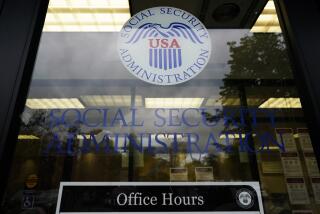Watch out for shady companies promising to help you repay student loans

- Share via
Dear Liz: I’m 32 and have a little over $100,000 in student debt from undergraduate and graduate school. I’m trying to get my professional life on track, and I can’t figure out how to pay the loans off. Everything I see online seems shady. What are the questions I need to be asking myself? What are the things I should be searching for on the Internet to help me get control of my financial situation?
Answer: “Shady” is exactly the right word to describe many of the companies promising student loan debt relief. They’re making false promises and charging troubled borrowers fat fees for government help that’s available for free. Many of these outfits get disciplined in one state, only to pop up in another.
If you’re struggling to pay federal student loans, you have several options for making the payments more manageable. You can research income-based repayment programs at StudentLoans.gov. Private student loans don’t have the same consumer protections or numerous repayment options, but you can contact your lenders directly to see what they offer.
The amount of debt you have is large but not insurmountable, especially if it qualified you for a well-paying job.
You don’t have to rush to pay off the federal student loans because those offer low, fixed rates, but you may want to prioritize paying off variable-rate private loans.
Also, don’t let your concern about your debt prevent you from saving for retirement. That, too, will be expensive, and the longer you wait to contribute to a retirement fund, the harder it will be to catch up.

Avoid running out of money before you run out of breath
Dear Liz: I have two questions regarding the required minimum distributions from retirement accounts at 70½ years old. If I started taking 15% per year at 68, would I still be required to follow the IRS tables and take 27.4% at 70½? Also, can I take the required minimum distributions and roll them into a Roth?
Answer: Please, please, please hire a tax pro before you do anything else. Required minimum distributions can get complicated, and the cost of getting it wrong is huge. If you don’t withdraw enough, you’ll pay a whopping 50% federal penalty on the amount you should have withdrawn but didn’t. If you withdraw too much, you’re paying unnecessary taxes and losing years of future tax-deferred growth.
Which is exactly where you were headed. The IRS table to which you refer does not say you need to withdraw 27.4% of your nest egg at 70½. The 27.4 number is the distribution period. You divide your account balances by that figure to get the amount you’re supposed to withdraw the first year. Think about it: otherwise, your retirement accounts would be emptied within four years.
Even withdrawing 15% a year would exhaust your funds relatively quickly. A sustainable withdrawal rate — one that leaves you a reasonable chance of not running out of money before you run out of breath — is closer to 4%.
There are situations where you might want to start distributions early, even if you don’t need the money. Diligent savers might discover that their distributions would push them into a higher tax bracket if they wait until age 70½ to begin. When that’s the case, it can make sense to withdraw just enough to “fill out” their current tax bracket and pay a lower rate now rather than a higher rate later.
Here’s a simplified illustration. Let’s say a couple in their 60s has a large retirement portfolio and waiting until their 70s to start withdrawals would push them from their current 15% bracket to the 25% bracket. Instead, they might begin taking distributions early. If their current taxable income is around $30,000, for example, they could withdraw as much as $45,900 before being kicked into the 25% bracket, which begins at $75,900 for married couples.
These calculations have lots of moving parts, including different tax rates for taxable investments and for Social Security. That’s another reason to have a tax pro help you run the numbers.
Your pro will tell you that you can’t avoid taxes by rolling required minimum distributions into a Roth. You can contribute new money to a Roth, but only if you have earned income and your modified adjusted gross income is under certain limits. Those limits start to phase out at $118,000 for single filers and $186,000 for married couples filing jointly.
Liz Weston, a certified financial planner, is a personal finance columnist for NerdWallet. Questions may be sent to her at 3940 Laurel Canyon, No. 238, Studio City, CA 91604, or by using the “Contact” form at asklizweston.com. Distributed by No More Red Inc.
More to Read
Inside the business of entertainment
The Wide Shot brings you news, analysis and insights on everything from streaming wars to production — and what it all means for the future.
You may occasionally receive promotional content from the Los Angeles Times.










